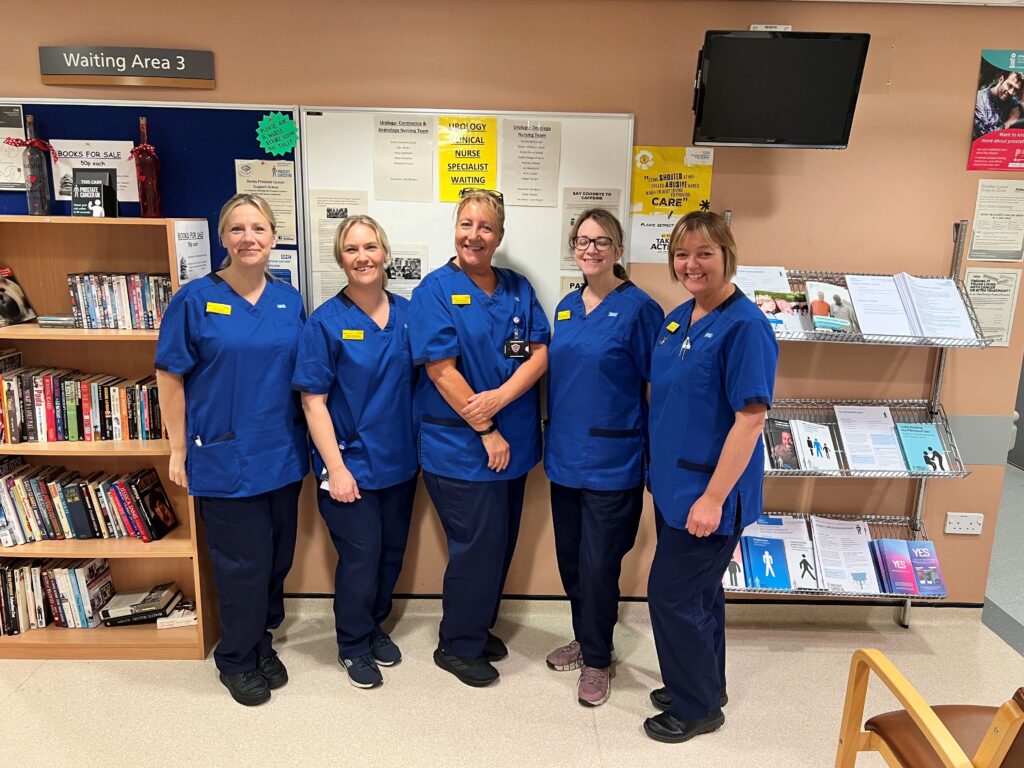Case Study – Transforming Continence Care with UHDB (University Hospitals of Derby and Burton
Overview
Following a review of continence product usage and expenditure, University Hospitals of Derby and Burton (UHDB) – Royal Derby Hospital identified unusually high usage of certain continence products. The aim was to establish a standardised product formulary across all five hospital sites, evaluate usage patterns, and understand variation in clinical practice.
Led by Anita Counsell, Lead Urology Clinical Nurse Specialist (CNS), and supported by Sheryl Stone (Account Manager at Ontex) and Naomi Gill,(Nurse Advisor at Ontex), the project set out to improve staff awareness, ensure appropriate product use, and reduce variation across wards. This was the Trust’s first unified approach to continence product provision.
“The key to the success of this project was that we all worked together so well. We were on the same page, focused on improving training, education, and support to create a uniform formulary. Regular meetings made the process a smooth transition.” – Sheryl Stone, Ontex Nurse Advisor
Data Analysis and Product Evaluation
The Urology CNS and Procurement teams conducted a comprehensive review of continence pad usage across all sites, mapping product volume, type, and brand. This detailed analysis revealed inconsistent product use, disproportionate consumption, and instances of inappropriate selection.
All suppliers on the NHS framework were assessed. Following clinical and commercial evaluation—including a tabletop assessment of pad quality and cost-effectiveness—Ontex was awarded the contract Trust-wide, retaining their existing position at Royal Derby Hospital and expanding to all other sites.
The procurement team worked with the Urology team to ensure that the selected supplier could provide not only the right product but also the implementation support and training necessary to embed change across a large, multi-site organisation.

Implementing Change
The project’s success hinged on three factors: accurate data, clear communication, and effective training.
Sheryl and Naomi worked closely with the Urology and Procurement teams to plan a Trust-wide rollout. Sheryl developed a digital support pack, ensuring ward teams received educational tools to complement physical training sessions.
The introduction of a restricted formulary allowed UHDB to standardise products, reduce waste, and streamline procurement. For example, high-absorbency pads, which were often used unnecessarily as a time-saving measure, were removed from general ordering, improving both cost efficiency and clinical practice.
Ontex played a critical role in supporting the transition. Their ward-based education, tailored to each department’s needs, reinforced correct fitting, product selection, and patient assessment. Their physical presence during rollout helped ensure the changes were understood and accepted.
“Challenging established practices is never easy,” noted Anita. “Some wards had routines based on habit rather than assessment. We needed to back the changes with training and clear guidance on appropriate clinical exceptions.”
Initial resistance—particularly to less absorbent pads—was addressed through practical demonstrations and staff support. Ontex’s involvement in training helped build confidence and flag areas requiring further attention from the Urology CNS team.
Monthly implementation reviews were held in the first year, followed by quarterly check-ins. Compliance data from Procurement and regular updates from Ontex Nurse Advisors ensured sustained progress and prompt resolution of any issues.
Impact and Outcomes
One year post-implementation, UHDB reported:
- £40,000 cost saving through reduced waste and streamlined product use
- Improved patient continence care, with more appropriate pad selection and change routines
- Increased staff knowledge, supported by
regular training and digital resources - Alignment between acute and community teams, enabling smoother transitions of care

“While cost reduction wasn’t our primary goal, this project has clearly improved patient outcomes, staff practice, and financial efficiency. The collaboration between the Trust and Ontex has been a major success.”
If you would like to receive continence training from Ontex please contact us at [email protected]
For more information on Ontex products, please visit https://ontex.com
